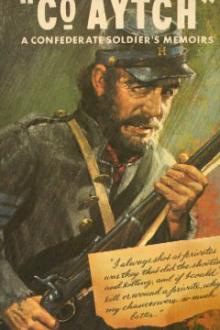The History Of Education by Ellwood P. Cubberley (little red riding hood read aloud .txt) 📕

- Author: Ellwood P. Cubberley
- Performer: -
Book online «The History Of Education by Ellwood P. Cubberley (little red riding hood read aloud .txt) 📕». Author Ellwood P. Cubberley
[23] When Lancaster first hired the large hall in Borough Road which later became an important training-college, and opened it as a mutual-instruction school, he announced: “All that will may send their children, and have them educated freely, and those who do not wish to have education for nothing, may pay for it if they please.”
[24] In 1820, Brougham, in introducing his “Bill for the Better Education of the Poor in England and Wales,” gave statistics as to the progress of education at that time in England. His estimate as to the numbers being educated were:
430,000 in endowed and privately managed schools; 220,000 in monitorial schools;
50,000 being educated at home;
100,000 educated only in Sunday Schools; 53,000 being educated in dame schools.
From these figures he argued that one in fifteen of the population of England and one in twenty in Wales were attending some form of school, but with only one in twenty-four in London. The usual period of school attendance for the poorer classes was only one and a half to two years.
[25] Known as the Health and Morals of Apprentices Act. It limited the working hours of apprentices to twelve; forbade night work; required day instruction to be provided in reading, writing, and arithmetic; required church attendance once a month; and provided for the registration and inspection of factories. The Act was very laxly enforced, and its chief value lay in the precedent of state interference which it established.
[26] Whitbread proposed a national system of rate-aided schools to provide all children in England with two years of free schooling, between the ages of seven and fourteen.
[27] See J. E. G. de Montmorency’s State Intervention in English Education, pp. 248-85, for Brougham’s address to the Commons in 1820 on “The Education of the Poor”; and pp. 285-324 for his address before the House of Lords in 1835, on “The Education of the People.” Both addresses contain an abundance of data as to existing conditions and needs.
[28] So called because the House of Lords rejected the first two passed by the Commons, and finally accepted the third only because the King had agreed to create enough new Lords to pass the bill unless it was enacted by the upper House.
[29] This was a development of the monitorial system of training, and was virtually an apprenticeship form of teacher-training.
[30] In 1885 the same liberty was extended to rural laborers. This added two million more voters, and gave England almost full manhood suffrage.
Finally, in 1918, some five million women were added to the voting classes.
[31] Nearly two million children had been provided with school accommodations, three fourths of which had been done by those associated with the Church of England. In doing this the Church had spent some �6,270,000 on school buildings, and had raised some �8,500,000 in voluntary subscriptions for maintenance. The Government had also paid out some �6,500,000 in grants, since 1833. In 1870 it was estimated that 1,450,000 children were on the registers of the state-aided schools, while 1,500,000 children, between the ages of six and twelve, were unprovided for.
[32] Speech before the House of Commons, July 23, 1870.
[33] “The clergy of the National Society exhibited amazing energy and succeeded, according to their own account, in doing in twelve months what in the normal course of events would have taken twenty years. By the end of the year they had lodged claims for 2885 building grants, out of a total of 3342. They also set to work, without any governmental assistance, to enlarge their schools and so increased denominational accommodation enormously. The voluntary contributions in aid of this work have been estimated at over �3,000,000. At the same time the annual subscriptions doubled…. By 1886, over 3,000,000 places had been added, one-half of which were due to voluntary agencies, and Voluntary Schools were providing rather more than two-thirds of the school places in the country. In 1897
the proportion had fallen to three-fifths.” (Birchenough, C., History of Elementary Education, pp. 138, 140.)
[34] These were the seven endowed secondary boarding schools—Winchester (1382), Eton (1440), Shrewsbury (1552), Westminster (1560), Rugby (1567), Harrow (1571), and Charterhouse (1611)—and the two endowed day schools,—
Saint Paul’s (1510) and Merchant Taylors’ (1561).
[35] At least one hundred towns, the Report showed, with a population of five thousand or over had no endowed secondary school, and London, with a population then (1867) of over three million, had but twenty-six schools and less than three thousand pupils enrolled. All the new manufacturing cities were in even worse condition than London.
[36] The University of London was originally founded in 1836, and reorganized in 1900.
[37] The scientist Thomas Huxley was a London School Board member, and, speaking as such, he expressed the views of many when he said: “I conceive it to be our duty to make a ladder from the gutter to the university along which any child may climb.”
[38] Royal (Bryce) Commission on Secondary Education, vol. I, p. 299.
London, 1895.
[39] Known as the “Education Act, 1918” (8 and 9 Geo. V, ch. 39). The Act has been reprinted in full in the Biennial Survey of Education, 1916-18, of the United States Commissioner of Education, in the chapter on Education in Great Britain. It also has been reprinted as an appendix to Moore, E. C., What the War teaches about Education, New York, 1919.
[1] “The Constitution,” as John Quincy Adams expressed it, “was extorted from the grinding necessities of a reluctant people” to escape anarchy and the ultimate entire loss, of independence, and many had grave doubts as to the permanence of the Union. It was not until after the close of the War of 1812 that belief in the stability of the Union and in the capacity of the people to govern themselves became the belief of the many rather than the very few, and plans for education and national development began to obtain a serious hearing.
[2] After the beginning of the national life a number of States founded and endowed a state system of academies. Massachusetts, in 1797, granted land endowments to approved academies. Georgia, in 1783, created a system of county academies for the State. New York extended state aid to its academies, in 1813, having put them under state inspection as early as 1787. Maryland chartered many academies between 1801 and 1817, and authorized many lotteries to provide them with funds, as did also North Carolina. The Rhode Island General Assembly chartered many academies, and aided them by lotteries. Ohio, Kentucky, and Indiana, among western States, also provided for county systems of academies.
[3] The study of Latin and a little Greek had constituted the curriculum of the old Latin grammar school, and its purpose had been almost exclusively to prepare boys for admission to the colony colleges. In true English style, Latin was made the language of the classroom, and even attempted for the playground as well. As a concession, reading, writing, and arithmetic were sometimes taught. The new academies, while retaining the study of Latin, and usually Greek, though now taught through the medium of the English, added a number of new studies adapted to the needs of a new society. English grammar was introduced and soon rose to a place of great importance, as did also oratory and declamation. Arithmetic, algebra, geometry, geography, and astronomy were in time added, and surveying, rhetoric (including some literature), natural and moral philosophy, and Roman antiquities were frequently taught. Girls were admitted rather freely to the new academies, whereas the grammar schools had been exclusively for boys. For better instruction a “female department” was frequently organized.
[4] Thomas Jefferson’s name appears in the first subscription list as giving $200, and he was elected a member of the first governing board. The chief sources of support of the schools, which up to 1844 remained pauper schools, were subscriptions, lotteries, a tax on slaves and dogs, certain license fees, and a small appropriation ($1500) each year from the city council.
[5] This organization opened the first schools in Philadelphia for children regardless of religious affiliation, and for thirty-seven years rendered a useful service there.
[6] All at once, comparatively, a new system had been introduced which not only improved but tremendously cheapened education. In 1822 it cost but $1.22 per pupil per year to give instruction in New York City, though by 1844 the per-capita cost, due largely to the decreasing size of the classes, had risen to $2.70, and by 1852 to $5.83. In Philadelphia, in 1817, the expense was $3, as against $12 in the private and church schools. One finds many notices in the newspapers of the time as to the value and low cost of the new system.
[7] The cotton-spinning industry illustrates the rapid growth of manufacturing in the United States. The 15 cotton mills of 1807 had increased to 801, by 1831; and to 1240, by 1840. The South owed its prosperity chiefly to cotton-growing and shipping, and did not develop factories and workshops until a much more recent period.
[8] Among many resolutions adopted by the laboring organizations the following is typical: “At a General Meeting of Mechanics and Workingmen held in New York City, in 1829, it was
“Resolved, that next to life and liberty, we consider education the greatest blessing bestowed upon mankind.
“Resolved, that the public funds should be appropriated (to a reasonable extent) to the purpose of education upon a regular system that shall insure the opportunity to every individual of obtaining a competent education before he shall have arrived at the age of maturity.”
[1] Connecticut and New York both had set aside lands, before 1800, to create such a fund, Connecticut’s fund dating back to 1750. Delaware, in 1796, devoted the income from marriage and tavern licenses to the same purpose, but made no use of the fund for twenty years. Connecticut, in 1795, sold its “Western Reserve” in Ohio for $1,200,000, and added this to its school fund. New York, in 1805, similarly added the proceeds of the sale of half a million acres of state lands, though the fund then formally created accumulated unused until 1812. Tennessee began to build up a permanent state school fund in 1806; Virginia in 1810; South Carolina in 1811; Maryland in 1812; New Jersey in 1816; Georgia in 1817; Maine, New Hampshire, Kentucky, and Louisiana in 1821; Vermont and North Carolina in 1825; Pennsylvania in 1831; and Massachusetts in 1834. These were established as permanent state funds, the annual income only to be used, in some way to be determined later, for the support of some form of schools.
[2] Now for the first time direct taxation for schools was likely to be felt by the taxpayer, and the fight for and against the imposition of such taxation was on in earnest. The course of the struggle





Comments (0)